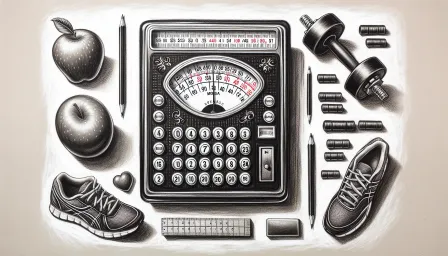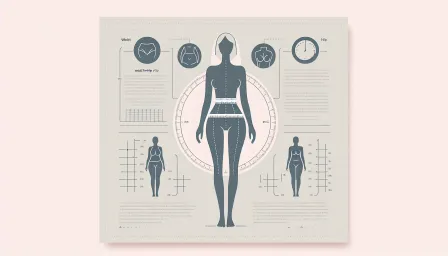Top 10 Exercise Routines for Office Workers to Boost Health and Productivity

Discover the top 10 exercise routines for office workers to improve health and productivity. These routines are easy to incorporate into your daily schedule and offer numerous benefits.
In today’s fast-paced work environment, it’s crucial for office workers to incorporate physical activity into their daily routine. Sitting for prolonged periods can lead to various health issues, including obesity, cardiovascular diseases, and musculoskeletal problems. Fortunately, there are several effective exercise routines that can elevate both health and productivity. This article outlines the top 10 exercise routines tailored for office workers, providing a comprehensive guide to help you stay active even with a busy schedule.
1. Desk Stretches
Desk stretches are simple and effective exercises that can be performed right at your workstation. These stretches help alleviate muscle tension and improve circulation. Common desk stretches include neck stretches, shoulder rolls, and wrist flexor stretches.
How to Perform Desk Stretches
- Neck Stretch: Sit upright and gently tilt your head towards one shoulder, holding for 15-20 seconds, then switch sides.
- Shoulder Roll: Roll your shoulders forward in a circular motion for 10-15 repetitions, then reverse direction.
- Wrist Flexor Stretch: Extend one arm in front of you with the palm facing down, then use the other hand to gently pull the fingers back towards your body, holding for 15-20 seconds on each side.
2. Chair Squats
Chair squats are a fantastic way to strengthen your lower body without needing a gym. By using your office chair, you can incorporate this exercise into short breaks throughout your day.
How to Perform Chair Squats
- Stand in front of your chair with feet shoulder-width apart.
- Lower your body as if you're sitting back into the chair, keeping your weight on your heels. Ensure your knees do not go past your toes.
- Before fully sitting down, push back up to the standing position.
- Repeat for 10-15 repetitions.
3. Seated Leg Lifts
This exercise targets your core and lower body muscles while allowing you to stay seated. It's ideal for maintaining activity levels during long stretches of desk work.
How to Perform Seated Leg Lifts
- Sit up straight in your chair with feet flat on the ground.
- Lift one leg straight out in front of you and hold for 3-5 seconds.
- Slowly lower the leg back down and switch to the other leg.
- Perform 10-15 repetitions on each leg.
4. Wall Push-Ups
Wall push-ups are a beginner-friendly alternative to traditional push-ups, offering the same benefits of strengthening the upper body and core muscles.
How to Perform Wall Push-Ups
- Stand a few feet away from a wall, placing your hands on the wall at shoulder height and width.
- Bend your elbows and lean towards the wall, keeping your body straight.
- Push back to the starting position.
- Repeat for 10-15 repetitions.
5. Office Yoga
Yoga helps improve flexibility, strength, and mental clarity. Incorporating short yoga sessions into your workday can alleviate stress and enhance overall well-being.
Recommended Office Yoga Poses
- Seated Cat-Cow: Sit at the edge of your chair. On an inhale, arch your back and look up (Cow pose). On an exhale, round your back and tuck your chin (Cat pose).
- Seated Forward Bend: Sit on the edge of your chair, extend your legs forward, and reach towards your toes, maintaining a straight back.
- Seated Twist: Sit up straight, place your right hand on the back of your chair and left hand on your right knee, and twist to the right. Hold for 15-20 seconds, then switch sides.
6. Walking Meetings
Transform traditional meetings into walking meetings when possible. Walking meetings promote creativity and physical activity while discussing work-related matters.
Tips for Effective Walking Meetings
- Plan a safe and quiet route where you can discuss without too much disturbance.
- Keep the group size small to ensure everyone can participate in the conversation.
- Set a time limit to keep the meeting focused and productive.
7. Mini Cardio Bursts
Mini cardio bursts can be done during breaks to boost your heart rate and energy levels. These short sessions are great for maintaining cardiovascular health and fighting off the afternoon slump.
Examples of Mini Cardio Bursts
- Jumping Jacks: Perform 30 seconds of jumping jacks, followed by a 30-second rest. Repeat 3-5 times.
- High Knees: Run in place while lifting your knees as high as possible for 30 seconds, followed by a 30-second rest. Repeat 3-5 times.
- Invisible Jump Rope: Pretend to jump rope for 30 seconds, rest for 30 seconds, then repeat 3-5 times.
8. Stretch Bands Workout
Using stretch bands allows you to perform resistance exercises that strengthen various muscle groups. They are portable and can be easily stored in your desk.
Sample Stretch Bands Exercises
- Bicep Curls: Stand on the band, hold the handles, and curl your hands towards your shoulders.
- Tricep Extensions: Hold the band behind your head with one hand and pull the other end with your other hand downward.
- Seated Rows: Sit on the ground with legs extended, loop the band around your feet, and pull the handles towards your body.
9. Stair Climbing
Taking the stairs instead of the elevator is a simple yet effective way to incorporate more physical activity into your day. Stair climbing improves cardiovascular health and strengthens leg muscles.
How to Make the Most of Stair Climbing
- Climb stairs at a brisk pace for a quick cardio workout.
- Incorporate intervals by alternating between slow and fast climbing.
- Use stairs for calf raises by standing on the edge and lifting your heels upwards.
10. Desk Ergonomics and Regular Movement
Ensuring proper desk ergonomics can significantly reduce the risk of developing musculoskeletal issues. Additionally, regular movement, such as standing or walking every hour, is essential for good health.
Tips for Better Desk Ergonomics
- Adjust your chair so that your feet are flat on the floor and your knees are at a 90-degree angle.
- Keep your computer monitor at eye level to reduce neck strain.
- Use a standing desk or desk converter to alternate between sitting and standing.
Incorporate Regular Movement
- Set a timer to remind you to stand up and stretch every hour.
- Take short walks around the office or outside for fresh air.
- Use phone calls as opportunities to stand and move.
Conclusion
Office workers face unique challenges when it comes to maintaining physical activity and health. By incorporating these top 10 exercise routines into your workday, you can effectively combat the adverse effects of prolonged sitting and enhance your overall well-being. Remember, consistency is key. Make these exercises a part of your daily routine to enjoy the long-term benefits of a healthier, more productive work life.



























